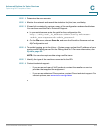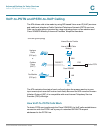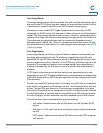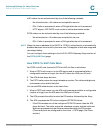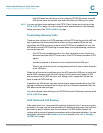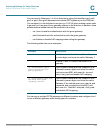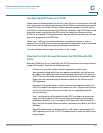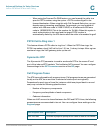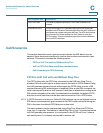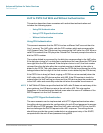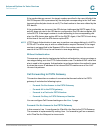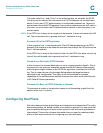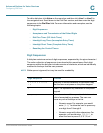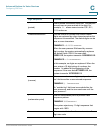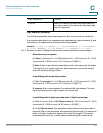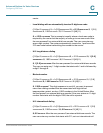
Advanced Options for Voice Services
Call Scenarios
Cisco SPA232D Administration Guide 222
C
Call Scenarios
This section describes some typical scenarios where the ATA device can be
applied. Some terms are introduced in the first few sections and reused in later
sections. This section includes the following topics:
• PSTN to VoIP Call with and Without Ring-Thru
• VoIP to PSTN Call With and Without Authentication
• Call Forwarding to PSTN Gateway
PSTN to VoIP Call with and Without Ring-Thru
The PSTN caller calls the PSTN line connected to the LINE port. Ring-Thru is
disabled. After the call rings for a delay equal to the value in
PSTN Answer Delay
,
the VoIP gateway answers the call and prompts the PSTN caller to enter a PIN
number (assuming PIN authentication is enabled). After a valid PIN is entered, the
caller is prompted to dial the VoIP number. A dial plan is selected according to the
PIN number entered by the caller. If authentication is disabled, the default PSTN
dial plan is used. Note than the dial plan choice cannot be 0 for a PSTN caller.
NOTE A
PSTN Access List
in terms of Caller ID (ANI) patterns can be configured into the
ATA device to automatically grant access to the PSTN caller without entering the
PIN. In this case, the default PSTN dial plan is also used.
The same scenario can be implemented using Ring-Thru. When the PSTN line
rings, Line 1 rings also. This feature is called
Ring-Thru
. If Line1 is picked up before
the VoIP gateway auto-answers, it is connected to the PSTN call. Line 1 hears a
call waiting tone if it is already connected to another call.
PSTN PIN Tone This tone is played to prompt a PSTN caller to enter a PIN
number.
Outside Dial Tone During two-stage PSTN-gateway dialing and with a dial plan
assigned, the ATA device collects digits from the VoIP caller and
processes the number using the dial plan. The ATA device plays
the
Outside Dial Tone
to prompt the VoIP caller to enter the
PSTN number. This tone should be specified to sound different
from the PSTN dial tone.
Call Progress Tone Description



